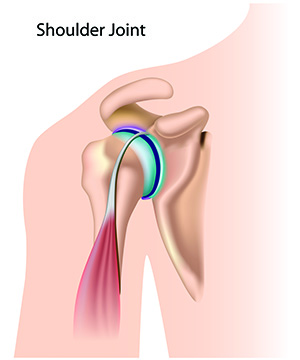- What Is a Shoulder Joint Replacement?
- Shoulder Joint Replacement Benefits
- Open Shoulder Surgery
- Arthroscopic Shoulder Surgery
- Reverse Total Shoulder Replacement
- Shoulder Surgery Recovery
 The shoulder is used to perform a dazzling array of motions and is the most mobile joint in the body. Over time or as a result of injury, arthritis can develop and cause reduced strength, limited function, and increasing pain. If this condition becomes severe enough, a shoulder joint replacement may be recommended to address your symptoms. Fortunately, you can find a top orthopaedic surgeon that can deliver exceptional care and compassionate treatment at our state-of-the-art practice. We utilize the most advanced techniques available, which are designed to reduce downtime, enhance recovery, and minimize scarring.
The shoulder is used to perform a dazzling array of motions and is the most mobile joint in the body. Over time or as a result of injury, arthritis can develop and cause reduced strength, limited function, and increasing pain. If this condition becomes severe enough, a shoulder joint replacement may be recommended to address your symptoms. Fortunately, you can find a top orthopaedic surgeon that can deliver exceptional care and compassionate treatment at our state-of-the-art practice. We utilize the most advanced techniques available, which are designed to reduce downtime, enhance recovery, and minimize scarring.
What Is a Shoulder Joint Replacement?
Shoulder joint replacement is a procedure that replaces a worn down or damaged shoulder joint with a set of prosthetics. Comprised of metal and a special medical-grade plastic, these prosthetics can restore mobility, strength, and comfort to the shoulder joint. Several techniques are available to accomplish this operation, including traditional open surgery, arthroscopic shoulder surgery, and reverse shoulder replacement. During your initial consultation, our skilled medical team will discuss your needs and evaluate your concerns to determine the best method for you.
Benefits of Shoulder Joint Replacement
If shoulder arthritis has led to chronic disability and pain, shoulder joint replacement can often enhance your quality of life. Other benefits of this procedure include:
- Significant pain relief
- Enhanced range of motion
It’s important to note that a joint replacement will not necessarily give you the joint function you had 20 or 30 years previously. This treatment is designed to reduce pain and improve movement and is only recommended when non-surgical methods fail to achieve the desired relief. Rehabilitation post-surgery is an essential part of obtaining the best possible outcome, and we will help you make the most of your post-operative experience.
Traditional Open Shoulder Surgery
An “open” technique refers to the size of the incision used, which is larger than with arthroscopic surgery. By using a larger incision, our surgeons can more easily see the affected area and position the replacement parts. While some physicians still use open surgery, more and more surgeons are using minimally invasive approaches that reduce the damage to surrounding tissues and offer patients an expedited recovery experience. In some cases, open surgery may be the only option, depending on the unique details of your treatment plan. If this is the situation for you, we will go over all the details so you can be well-informed about what to expect from start to finish.
Arthroscopic Shoulder Surgery
Using a special type of digital camera, arthroscopic surgery can be used to perform shoulder surgery without the need for a large incision. In this technique, small incisions are made and the camera (arthroscope) is inserted into one to allow the surgeon to visualize the treatment area. The camera projects the image onto a screen, which the surgeon uses as a guide. Through another small incision he can insert the instruments. The size of the incisions will also depend on the size of the prosthetics that are being placed, and not all types of shoulder replacement surgery can be completed with arthroscopic techniques. In all cases, we try to use the least invasive methods possible to achieve the optimal outcome.
Reverse Total Shoulder Replacement
Patients with rotator cuff tears and shoulder arthritis have another option for treatment called a reverse total shoulder replacement. In most shoulder replacement operations, the prosthetics mimic the natural anatomy of the joint, with a ball attached to the end of the upper arm bone (humerus) and a socket placed within the shoulder joint. In a reverse total shoulder replacement, the ball is placed within the shoulder joint and the socket is created at the end of the arm. What this does is modify which muscles are used to power the arm. Rotator cuff tears can reduce strength and motion. By using different muscles—ones not affected by the tears—patients can more likely regain full strength and function after a shoulder replacement.
Recovery Following Shoulder Surgery
Your recovery experience will depend on the type of surgery you have, the technique used, and your own natural rate of healing. Everyone’s response is a little different, and you should listen to your body to determine when you’re ready to do certain things and participate in certain activities. Open surgery typically requires a longer recovery and the scars will be longer, though most patients heal well. Arthroscopic and minimally invasive methods usually come with less downtime and a faster recovery, and our physicians will provide additional details about each stage of healing during your consultation.
Our goal is to deliver unparalleled care, and we encourage you to reach out with any questions about shoulder replacement surgery and the recovery process. If you think this procedure may be right for you, our skilled and knowledgeable medical team is standing by to help.
